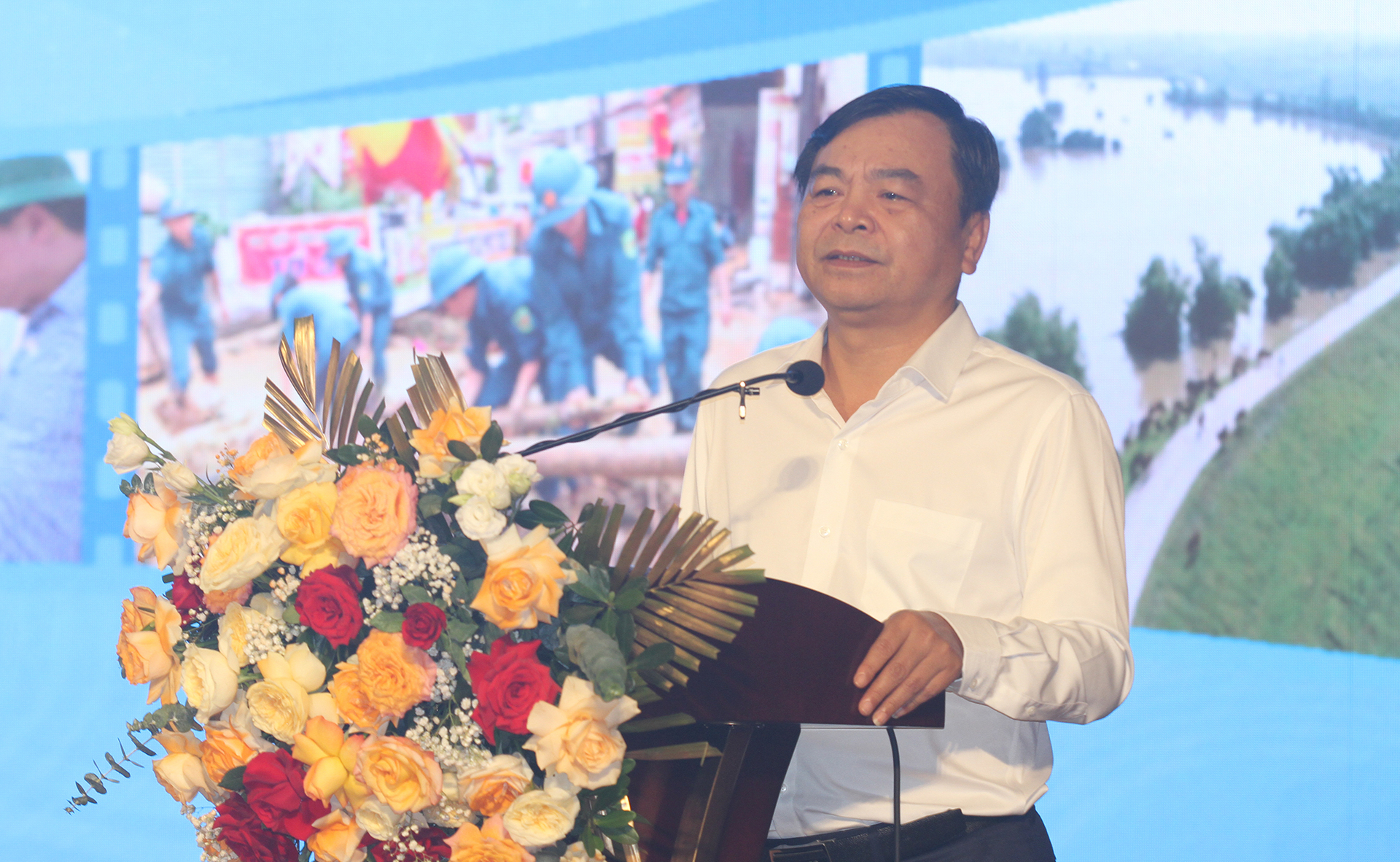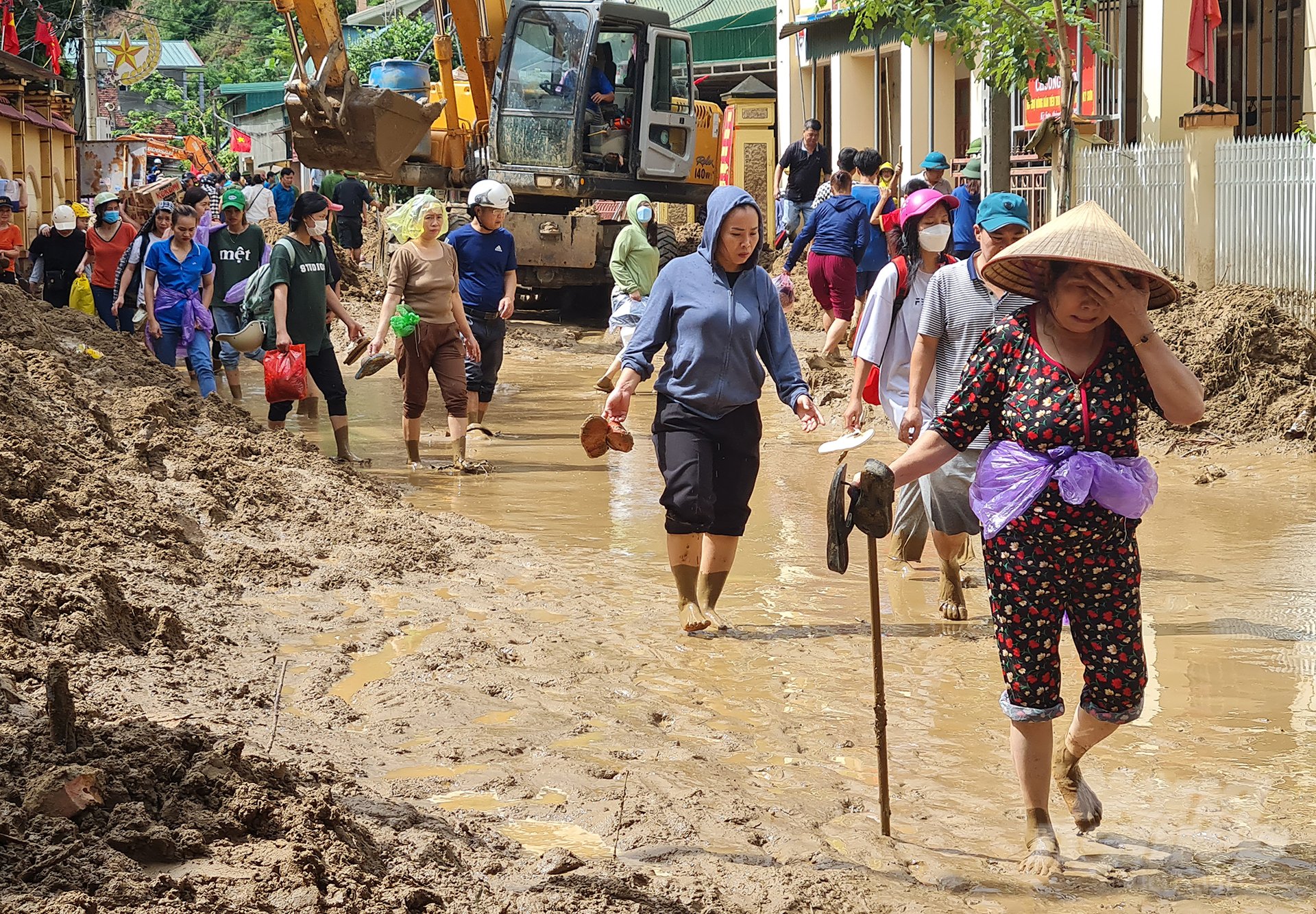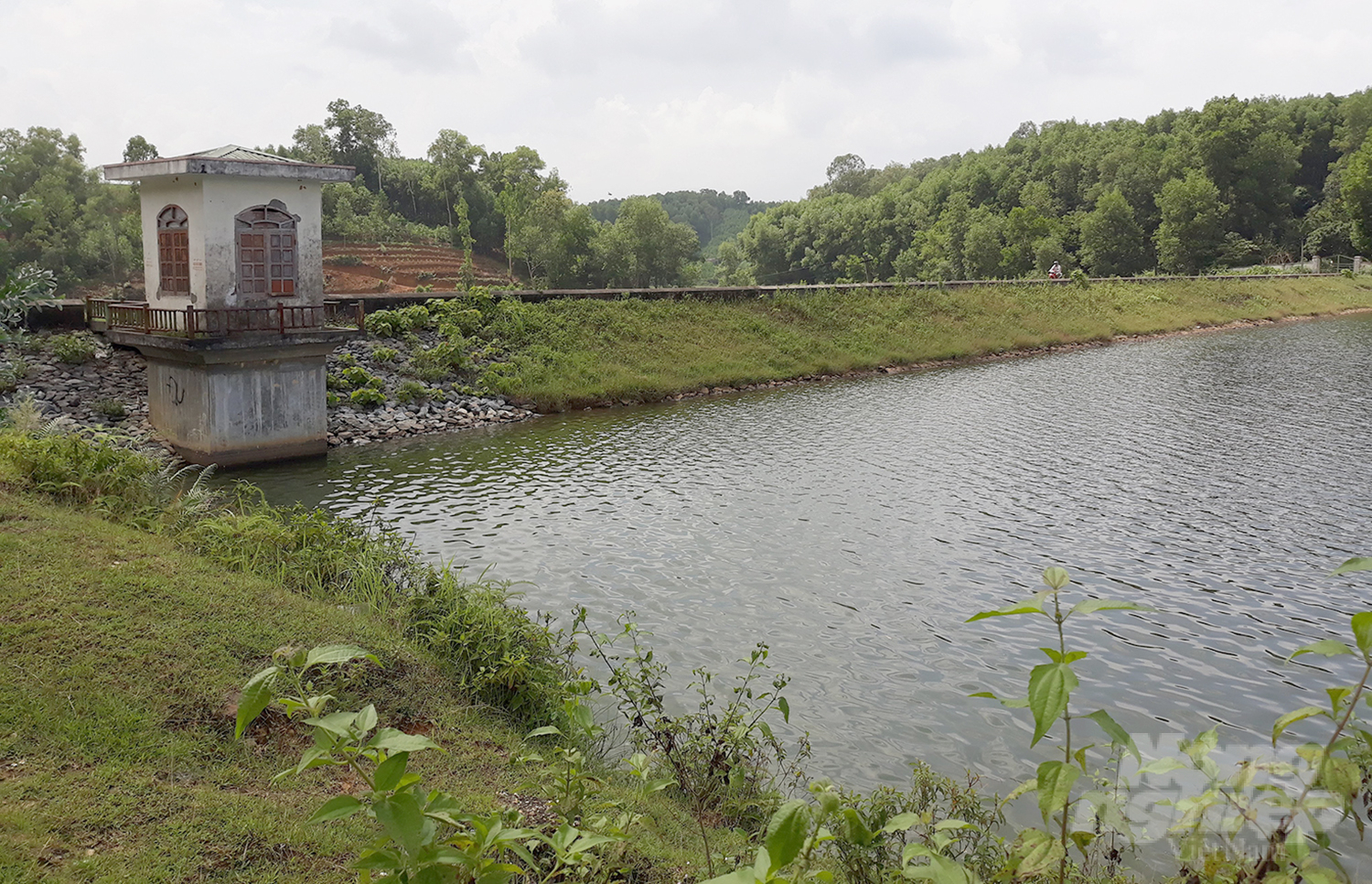June 4, 2025 | 06:16 GMT +7
June 4, 2025 | 06:16 GMT +7
Hotline: 0913.378.918
June 4, 2025 | 06:16 GMT +7
Hotline: 0913.378.918

Deputy Minister Nguyen Hoang Hiep providng detailed instructions on natural disaster prevention and control. Photo: Viet Khanh.
On June 5, the Disaster and Dyke Management Authority held a conference in Nghe An to discuss natural disaster prevention, and dyke management and protection. Participants of the conference include chairpersons of various district-level People's Committees of provinces and cities with at least Grade-III dyke.
The conference focused on the instructions provided by the Prime Minister and the Minister of Agriculture and Rural Development. Furthermore, participants discussed other key tasks in disaster and dyke management in 2023, solutions to existing difficulties and problems, and the promotion of outstanding initiatives.

Natural disasters are increasingly unpredictable worldwide, leaving many people in despair. Photo: Viet Khanh.
As chair of the conference, Deputy Minister of Agriculture and Rural Development Nguyen Hoang Hiep emphasized that “The Chairman of District-level People's Committee plays a crucial role in the plan to ensure the safety of the dyke system. They are directly in charge of the prevention and handling of infractions.
Consequently, districts with Chairman and heads of People's Committees who are experienced, dilligent and responsible, will find that their dyke management are highly effective, few infractions”.
Deputy Minister Nguyen Hoang Hiep requested the Chairman of local People's Committees to focus on dyke management, strengthen patrol and control to promptly detect and handle infractions.
This conference is necessary due to the rising number of abnormal, extreme and irregular natural disasters across the country. Vietnam has reported 21 out of 22 types of natural disasters, excluding tsunamis, with over 1,000 natural disasters recorded.

The impoverished district of Ky Son in Nghe An province has been hit by multiple storms and floods in 2022. Photo: Quoc Toan.
Natural disasters have claimed over 83,700 lives and caused 330 billion USD in economic losses globally since the beginning of 2022. Most notably, super typhoon MAWAR located in eastern sea of the Philippines was recorded with the strongest intensity.
Participants at the workshop reported that many provinces and cities across the country have a dense dyke system. However, low investment capital for new construction, renovations, maintenance, etc. combined with poor infrastructure quality have resulted in several managerial and operational challenges.
On the other hand, there are cases of law violation, encroachment, illegal construction that directly impair the construction corridor. These infractions increase the risk of heavy damage when natural disasters occur.
Every rainy season, Nghe An province has to struggle to withstand tropical depressions, flood pipes, flash floods, floods, landslides, droughts, cold weather, hail, tornadoes, lightning storms, etc. Natural disasters and severe weather phenomena have inhibited the development of this province.

The lack of funds to construct, upgrade, and maintain the dyke system is a major challenge in many provinces and cities. Photo: Viet Khanh.
According to Mr. Nguyen Van De, Vice Chairman of Nghe An Provincial People's Committee, the province has a dyke system that spans over 500 kilometers. This extensive dyke system is responsible for preventing flood water in rivers, preventing storm surges in sea dykes, and protecting the lives of nearly 2 million people as well as 260,000 hectares of residential, public and agricultural land.
In addition to the protection against heavy floods, the dykes also play an important role in the province's traffic system. Namely, the dyke surface and the dyke body are combined as national highways, district roads, inter-commune and inter-village roads, and roads for local agricultural production.
However, the increasingly devastating climate change, the increasing frequency of natural disasters, and the alarming quality of the earth-reinforced dykes have placed immense pressure on Nghe An province.
Due to its limited resources, Nghe An province had to follow the motto of "proactive prevention, timely response, urgent and effective remedy, and prevention is key".
Vice Chairman of Nghe An Provincial People's Committee emphasized that: "In the immediate future, Nghe An province looks forward to receiving support from the Government, ministries and central agencies with regards to preventing and overcoming the consequences of natural disasters. More importantly, I hope that the Ministry of Agriculture and Rural Development will allocate additional funds to complete Luong Yen Khai dyke in Thanh Chuong district. This infrastructure has been the primary concern of the local population".

Nghe An province is home to a complex network of lakes and dams. However, because the majority of them were constructed decades ago, primarily by hand, these structures are in serious danger. Photo: Quoc Toan.
Translated by Nguyen Hai Long

(VAN) Technology is redrawing the map of Vietnamese aquaculture: more modern, greener, and more sustainable.

(VAN) Novel process harnesses machine learning to reveal groups of genes that determine how efficiently plants use nitrogen.

(VAN) Several scientists and farmers are experimenting with soil treatment in some key durian-growing regions such as Cai Lay (Tien Giang), Dak Song, Gia Nghia, and Dak R’lap (Dak Nong).
/2025/05/25/4127-3-073637_820.jpg)
(VAN) Thanks to the promotion from an FAO-implemented project, vegetable production in greenhouses in Moc Chau has seen strong development, from 1.5 hectares in 2021 to nearly 50 hectares in 2024.

(VAN) FAO has recently supported USD 140,000 to implement the project 'Risk mitigation human-animal interface risks through disease control initiatives in pig farming.'

(VAN) The People's Committee of Tra Vinh province has approved an adjustment to the investment policy for the Green Hydrogen Plant project, increasing its area to approximately 52.76 hectares.
![Reducing emissions from rice fields: [2] Farmers’ commitment to the soil](https://t.ex-cdn.com/nongnghiepmoitruong.vn/608w/files/news/2025/05/05/dsc08881jpg-nongnghiep-140632.jpg)
(VAN) Clean rice cultivation model in Thuong Tan commune, Bac Tan Uyen district, is assisting local residents in achieving sustainable agriculture by substantially reducing costs, increasing productivity, and protecting the environment.